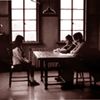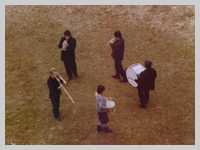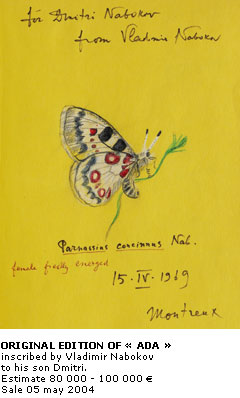
Bill & Nada’s was an unassuming Salt Lake institution, a 24-hour diner [“we never close”] that sat on a downtown corner for decades, providing eggs & brains, pancakes with coconut syrup, hot coffee and a haven for folks who didn’t care for the uptight, corporate-flavored fuss of Denny’s or Village Inn.
While it’s been years since Nada passed away, Bill and his second wife ran the place until a few years ago; it closed down as giant bigbox retail stores moved into the neighborhood.
The December night Bill & Nada’s closed, I went through with my DV camera, documenting what details and ambience I could, for later reference. [I have a script somewhere about the restaurant]. I wanted to be able to recreate the counter, the booths, the big wheel, the murals [like the one above, Bill outfitted for a parade. He showed and rode horses a lot over the years.]
Far more interesting is longtime customer Bert Singleton’s Bill & Nada’s tribute website. He’s been collecting pictures of Bill & family, and of as many of the regulars at the counter as he can round up. He also has a picture of the place as it looks now. Apparently, the business that was set to take the restaurant site over never took off. Rather than being razed and erased from the map as people figured, the building has stuck around, now never open, a sad jog to the memories of the family of strangers who grew around it.
Bert’s page is always open. [billandnadas.com]
Previously: Bill & Nada’s Cafe

 I’ve admired Hirokazu Kore-eda’s films since seeing
I’ve admired Hirokazu Kore-eda’s films since seeing  This, combined with his expert direction of non-professional actors, resulted in the masterful–and Cannes-winning–performances by his child actors in Nobody Knows, which will be released in the US in January.
This, combined with his expert direction of non-professional actors, resulted in the masterful–and Cannes-winning–performances by his child actors in Nobody Knows, which will be released in the US in January.

 Last week, in the Sony Classics offices on Madison Avenue, I sat down to talk with Errol Morris, whose current documentary, The Fog of War: Eleven Lessons from the Life of Robert S. McNamara, was nominated for an Academy Award.
Last week, in the Sony Classics offices on Madison Avenue, I sat down to talk with Errol Morris, whose current documentary, The Fog of War: Eleven Lessons from the Life of Robert S. McNamara, was nominated for an Academy Award.